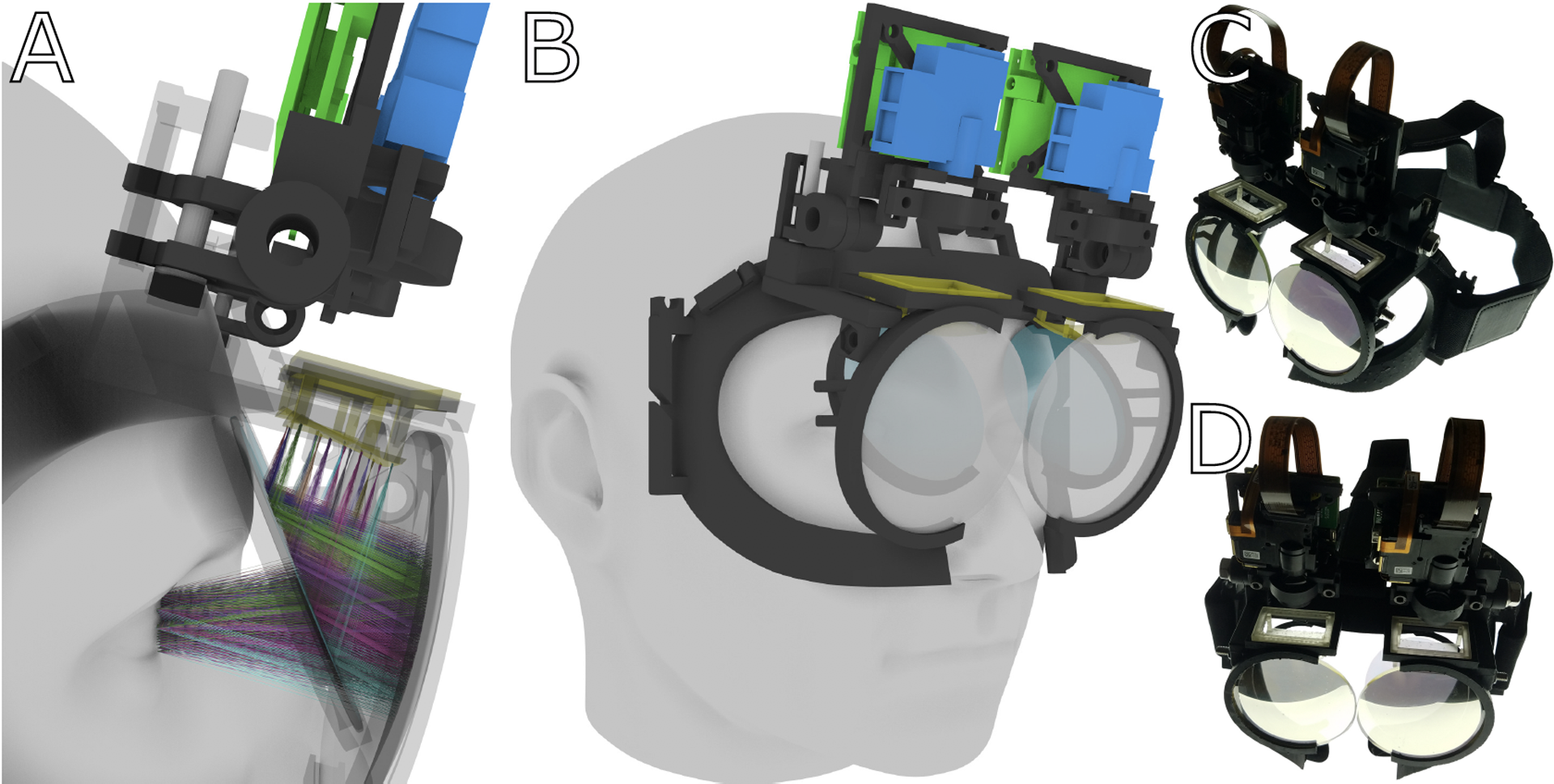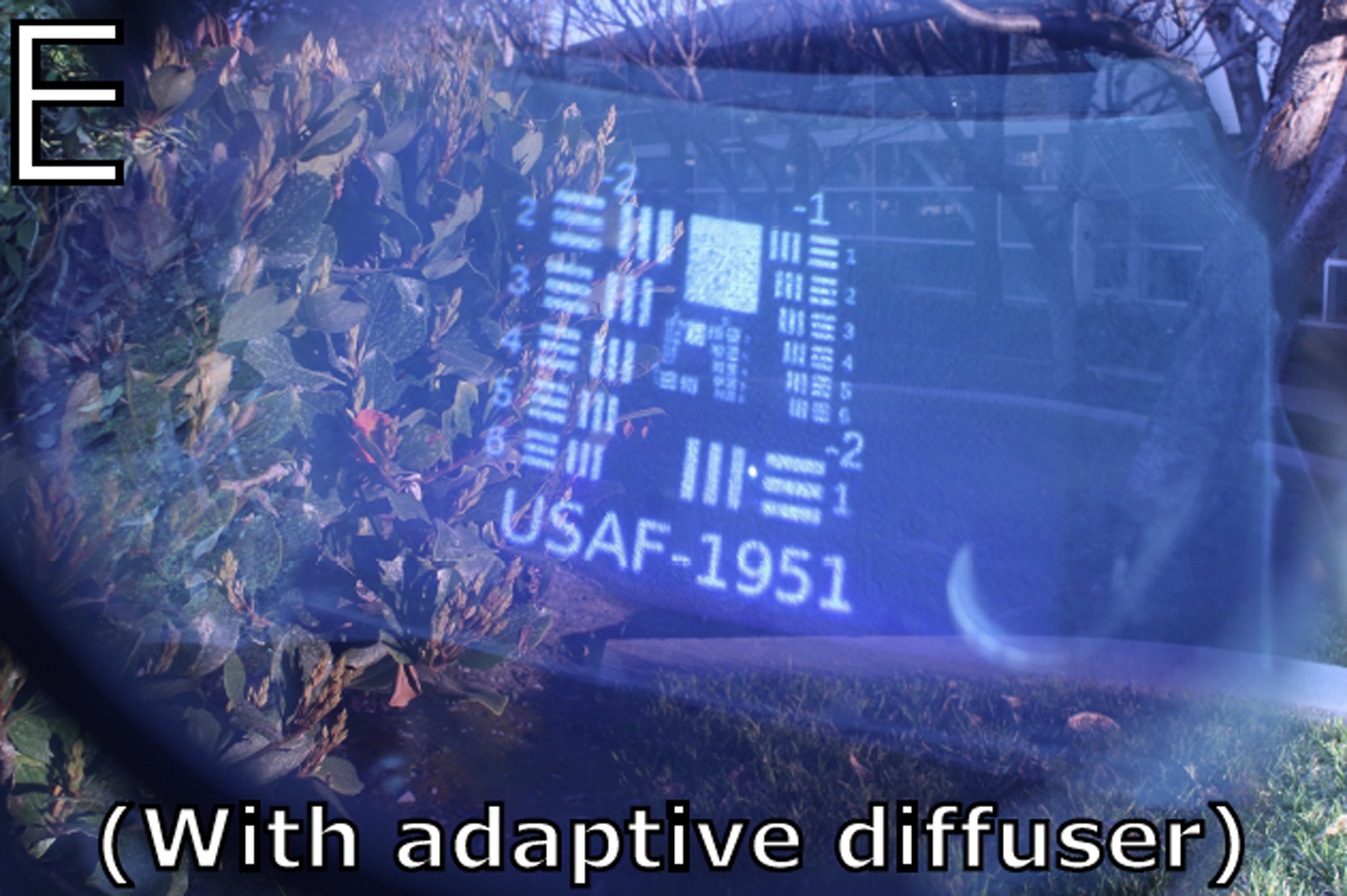“Steerable Application-Adaptive Near-Eye Displays” by Rathinavel, Chakravarthula, Akşit, Spjut, Boudaoud, et al. …
Conference:
- SIGGRAPH 2018
-
More from SIGGRAPH 2018:


Type(s):
E-Tech Type(s):
- 3D Printing
- Augmented Reality
- Kishore Rathinavel
- Praneeth Chakravarthula
- Kaan Akşit
- Josef Spjut
- Ben Boudaoud
- John Turner Whitted
- David P. Luebke
- Henry Fuchs
Entry Number: 18
Title:
- Steerable Application-Adaptive Near-Eye Displays
Presenter(s):
Project Affiliation:
- University of North Carolina at Chapel Hill and NVIDIA
Description:
The design challenges of see-through near-eye displays can be mitigated by specializing an augmented reality device for a particular application. We present a novel optical design for augmented reality near-eye displays exploiting 3D stereolithography printing techniques to achieve similar characteristics to progressive prescription binoculars. We propose to manufacture inter-changeable optical components using 3D printing, leading to arbitrary shaped static projection screen surfaces that are adaptive to the targeted applications. We identify a computational optical design methodology to generate various optical components accordingly, leading to small compute and power demands. To this end, we introduce our augmented reality prototype with a moderate form-factor, large field of view. We have also presented that our prototype is promising high resolutions for a foveation technique using a moving lens in front of a projection system. We believe our display technique provides a gate-way to application-adaptive, easily replicable, customizable, and cost-effective near-eye display designs.
Other Information:
To listen to a description of this contribution in multiple languages, visit: SIGGRAPH 2018 Emerging Technologies Audio Guide
References:
K. Akşit, W. Lopes, J. Kim, P. Shirley, and D. Luebke. 2017. Near-Eye Varifocal Augmented Reality Display using See-Through Screens. ACM Trans. Graph. (SIGGRAPH) 6 (2017). Issue 36.
Eric Brockmeyer, Ivan Poupyrev, and Scott Hudson. 2013. PAPILLON: designing curved display surfaces with printed optics. In Proceedings of the 26th annual ACM symposium on User interface software and technology. ACM, 457–462.
David Dunn, Cary Tippets, Kent Torell, Petr Kellnhofer, Kaan Akşit, Piotr Didyk, Karol Myszkowski, David Luebke, and Henry Fuchs. 2017. Wide Field Of View Varifocal Near-Eye Display Using See-Through Deformable Membrane Mirrors. IEEE Transactions on Visualization and Computer Graphics 23, 4 (2017), 1322–1331.
David M Hoffman, Ahna R Girshick, Kurt Akeley, and Martin S Banks. 2008. Vergence– accommodation conflicts hinder visual performance and cause visual fatigue. Journal of vision 8, 3 (2008), 33–33.
Urho Konttori, Klaus Melakari, and Oiva Arvo Oskari Sahlsten. 2017. Display apparatus and method of displaying using focus and context displays. (July 18 2017). US Patent 9,711,072.
Bernard Kress and Thad Starner. 2013. A review of head-mounted displays (HMD) technologies and applications for consumer electronics. In SPIE Defense, Security, and Sensing. International Society for Optics and Photonics.
Nathan Matsuda, Alexander Fix, and Douglas Lanman. 2017. Focal surface displays. ACM Transactions on Graphics (TOG) 36, 4 (2017), 86.
Thiago Pereira, Szymon Rusinkiewicz, and Wojciech Matusik. 2014. Computational light routing: 3d printed optical fibers for sensing and display. ACM Transactions on Graphics (TOG) 33, 3 (2014), 24.
Jannick P Rolland, Akitoshi Yoshida, Larry D Davis, and John H Reif. 1998. Highresolution inset head-mounted display. Applied optics 37, 19 (1998), 4183–4193.
William W Sprague, Emily A Cooper, Ivana Tošić, and Martin S Banks. 2015. Stereopsis is adaptive for the natural environment. Science Advances 1, 4 (2015), e1400254.
Karl Willis, Eric Brockmeyer, Scott Hudson, and Ivan Poupyrev. 2012. Printed optics: 3D printing of embedded optical elements for interactive devices. In Proceedings of the 25th annual ACM symposium on User interface software and technology. ACM, 589–598.
Keyword(s):
- Near eye displays
- See-through Displays
- Application Adaptive Displays
- Computational Displays
- Augmented Reality Displays
- 3D printed optical components
- projection displays






